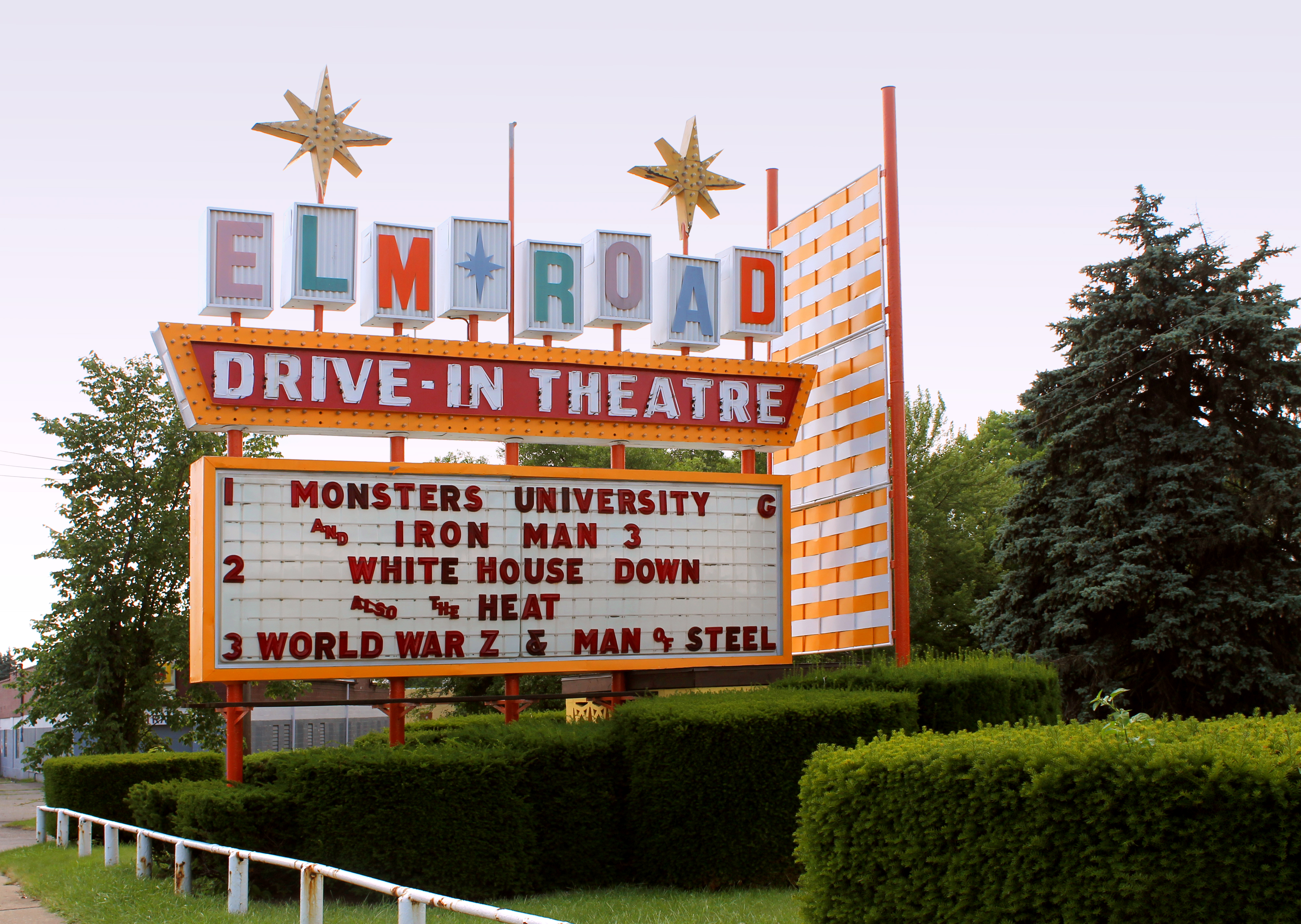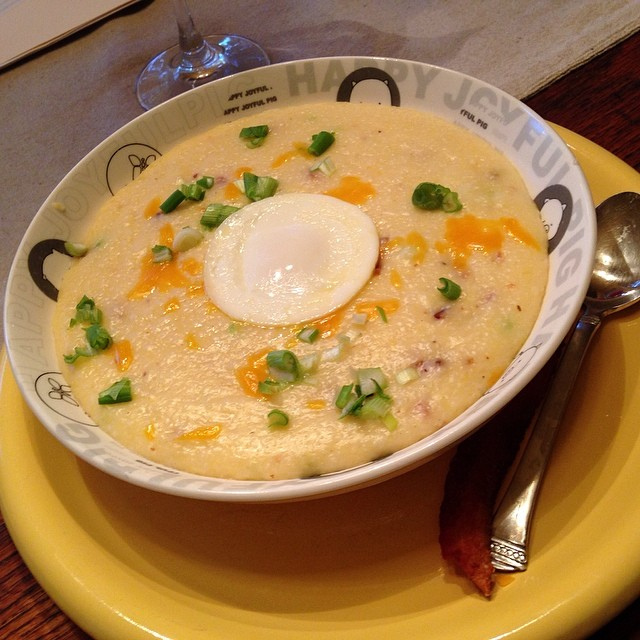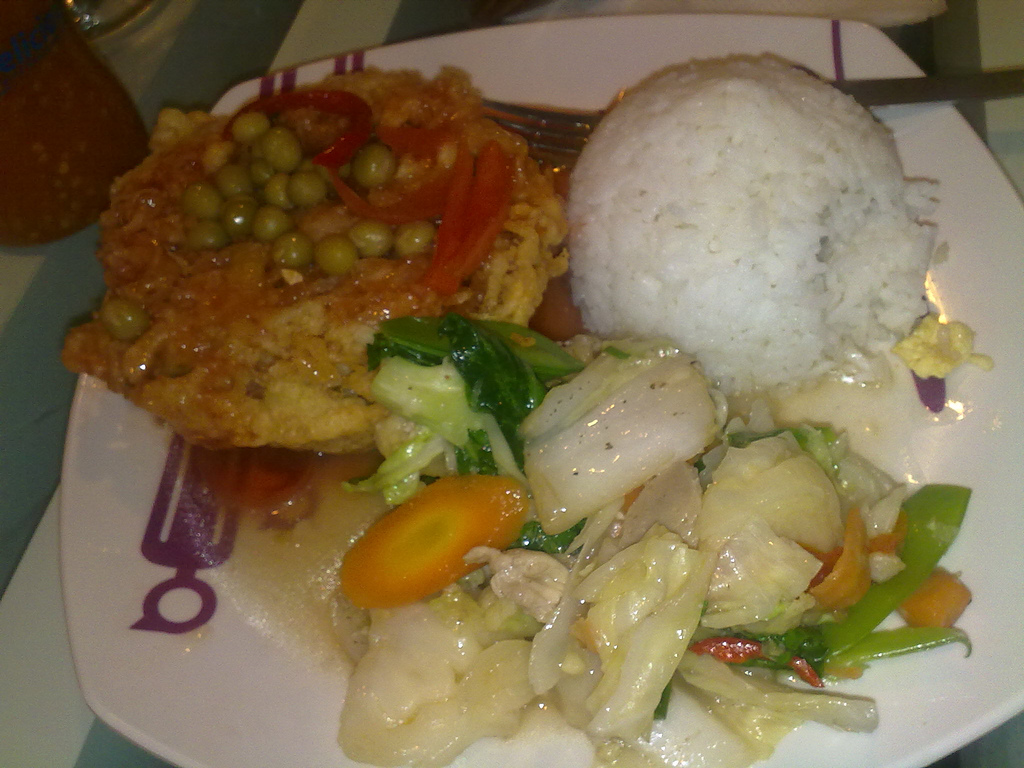|
Holiday Bowl (building)
The Holiday Bowl was a bowling alley on Crenshaw Boulevard in Los Angeles, California. It was founded in 1958 by five Japanese-Americans and was a significant part of the rebuilding process of the Nikkei community after internment during World War II. The owners of the Holiday Bowl sold shares throughout the community to finance its construction."Holiday bowl History project The Studio for Southern California History https://web.archive.org/web/20110930074200/http://www.socalstudio.org/collection/holiday_bowl/index.htm Cultural significance Located on Crenshaw Boulevard, the Holiday Bowl was important in the desegregation of Los Angeles and served an Anglo American, African American, and Japanese American clientele. The coffee shop served grits, udon, chow mein, and hamburgers. The Bowl operated four decades, and was a cultural, architectural, and recreational feature for the Crenshaw business district "as the Hollywood Bowl has for the Hollywood Hills".The Best...The Beautiful. ... [...More Info...] [...Related Items...] OR: [Wikipedia] [Google] [Baidu] |
Googie
Googie architecture ( ) is a type of futurist architecture influenced by car culture, jets, the Atomic Age and the Space Age. It originated in Southern California from the Streamline Moderne architecture of the 1930s, and was popular in the United States from roughly 1945 to the early 1970s. Googie-themed architecture was popular among roadside businesses, including motels, coffee houses and gas stations. The style later became widely known as part of the mid-century modern style, elements of which represent the populuxe aesthetic, as in Eero Saarinen's TWA Terminal. The term ''Googie'' comes from the now-defunct Googies Coffee Shop in Hollywood designed by John Lautner. Similar architectural styles are also referred to as Populuxe or Doo Wop. Features of Googie include upswept roofs, curvilinear, geometric shapes, and bold use of glass, steel and neon. Googie was also characterized by Space Age designs symbolic of motion, such as boomerangs, flying saucers, diagrammatic ato ... [...More Info...] [...Related Items...] OR: [Wikipedia] [Google] [Baidu] |
Leimert Park, Los Angeles
Leimert Park (; ) is a neighborhood in the South Los Angeles region of Los Angeles, California. Developed in the 1920s as a mainly residential community, it features Spanish Colonial Revival homes and tree-lined streets. The Life Magazine/Leimert Park House is a Los Angeles Historic-Cultural Monument. The core of Leimert Park is Leimert Park Village, which consists of Leimert Plaza Park, shops on 43rd Street and on Degnan Boulevard, and the Vision Theater. The village has become the center of both historical and contemporary African-American art, music, and culture in Los Angeles. History Leimert Park is named for its developer, Walter H. Leimert, who began the subdivision business center project in 1928. The master plan was designed by the Olmsted Brothers company, which was managed by the sons of Frederick Law Olmsted (1822–1903), the landscape designer best known for Central Park in New York City. Elderly Japanese-American residents still live in the area, and some ... [...More Info...] [...Related Items...] OR: [Wikipedia] [Google] [Baidu] |
Jack Laxer
Jack Laxer (1927–2018) was an American photographer best known for his work in stereoscopy. His photographs of California modern architecture have been published in magazines and books, displayed in museums, and included in educational programs since the 1950s. He photographed the homes of Lucille Ball and Harold Lloyd with the Stereo Realist camera. His clients included the architects Paul Revere Williams, William F. Cody, Arthur Froehlich, Ladd & Kelsey, and Armet & Davis, best known for their Googie coffee shops. Beginning in 1951 he documented the designs of Louis Armet and Eldon Davis including Norms, Pann's, and the Holiday Bowl. These images were included in Alan Hess's book ''Googie: Fifties Coffee Shop Architecture'', setting off a revival of interest in the style beginning in the 1980s. The Los Angeles Conservancy Modern Committee exhibited Laxer's photography in 1993 in an exhibition about the work of Armet & Davis at the Union Oil Center. In 2001 the group pro ... [...More Info...] [...Related Items...] OR: [Wikipedia] [Google] [Baidu] |
Googie Architecture
Googie architecture ( ) is a type of futurist architecture influenced by car culture, Jet aircraft, jets, the Atomic Age and the Space Age. It originated in Southern California from the Streamline Moderne architecture of the 1930s, and was popular in the United States from roughly 1945 to the early 1970s. Googie-themed architecture was popular among roadside businesses, including motels, coffee houses and gas stations. The style later became widely known as part of the mid-century modern style, elements of which represent the populuxe aesthetic, as in Eero Saarinen's TWA Terminal. The term ''Googie'' comes from the now-defunct Googies Coffee Shop in Hollywood, Los Angeles, Hollywood designed by John Lautner. Similar architectural styles are also referred to as Populuxe or Doo Wop. Features of Googie include upswept roofs, curvilinear, Geometry, geometric shapes, and bold use of glass, steel and neon. Googie was also characterized by Space Age designs symbolic of motion, such a ... [...More Info...] [...Related Items...] OR: [Wikipedia] [Google] [Baidu] |
1992 Los Angeles Riots
The 1992 Los Angeles riots, sometimes called the 1992 Los Angeles uprising and the Los Angeles Race Riots, were a series of riots and civil disturbances that occurred in Los Angeles County, California, in April and May 1992. Unrest began in South Central Los Angeles on April 29, after a jury acquitted four officers of the Los Angeles Police Department (LAPD) charged with using excessive force in the arrest and beating of Rodney King. This incident had been videotaped and widely shown in television broadcasts. The rioting took place in several areas in the Los Angeles metropolitan area as thousands of people rioted over six days following the verdict's announcement. Widespread looting, assault, and arson occurred during the riots, which local police forces had difficulty controlling due to lack of personnel and resources. The situation in the Los Angeles area was resolved only after the California National Guard, United States military, and several federal law enforcement ... [...More Info...] [...Related Items...] OR: [Wikipedia] [Google] [Baidu] |
Biscuits And Gravy
Biscuits and gravy is a popular breakfast dish in the United States, especially in the South. The dish consists of soft dough biscuits covered in white gravy (sawmill gravy), made from the drippings of cooked pork sausage, flour, milk, and often (but not always) bits of sausage, bacon, ground beef, or other meat. The gravy is often flavored with black pepper. History The meal emerged as a distinct regional dish after the American Revolutionary War (1775–1783), when stocks of foodstuffs were in short supply. Breakfast was necessarily the most substantial meal of the day for a person facing a day of work on the plantations in the American South. In addition, the lack of supplies and money meant it had to be cheap. Restaurant chains specializing in biscuits and gravy include Biscuitville, in Virginia and North Carolina, and Tudor's Biscuit World, in West Virginia. Variations Tomato gravy is white gravy mixed with crushed or diced tomatoes. See also * Chipped beef on toast * ... [...More Info...] [...Related Items...] OR: [Wikipedia] [Google] [Baidu] |
Short Ribs
Short ribs are a cut of beef taken from the brisket, chuck, plate, or rib areas of beef cattle. They consist of a short portion of the rib bone and the surrounding meat, which varies in thickness. There are two major types of cuts: the "flanken", which is cut across the bone and leaves the bone just or less in length, and the "English", which is cut parallel to the bone and leaves the bone up to in length. English cut short ribs may be served individually, or three or four may be served connected to one another (a style known as the "plate"). Short ribs are popular in many international cuisines. Types of short ribs Meatpacking executive Richard C. Banfield notes that the term "short ribs" comes from the fact that the cut of meat contains only a portion of each long beef rib. Using American butcher's nomenclature, short ribs may be taken from the brisket, chuck, plate, or rib areas of beef cattle. The '' serratus ventralis'' muscle defines the area in the beef carcass from ... [...More Info...] [...Related Items...] OR: [Wikipedia] [Google] [Baidu] |
Grits
Grits are a type of porridge made from boiled cornmeal. Hominy grits are a type of grits made from hominy – corn that has been treated with an alkali in a process called nixtamalization, with the pericarp (ovary wall) removed. Grits are often served with flavorings as a breakfast dish. Grits can be savory or sweet, with savory seasonings being more common. Grits are similar to other thick maize-based porridges from around the world, such as polenta and mieliepap. The dish originated in the Southern United States but is now available nationwide. Grits are often part of a dinner entrée shrimp and grits, served primarily in the South. The word "grits" is derived from the Old English word , meaning "coarse meal." In the Charleston, South Carolina, area, cooked hominy grits were primarily referred to as "hominy" until the 1980s. Origin The dish originated with the Native American Muscogee tribe using a corn similar to hominy. American colonists learned to make the dish fro ... [...More Info...] [...Related Items...] OR: [Wikipedia] [Google] [Baidu] |
Hot Links
A hot link (also "red link", "Louisiana red hot" or "Louisiana hot link") is a type of sausage used in the cuisine of the Southern United States, and a part of American barbecue, soul food, and Cajun and Louisiana Creole cuisines. It is also a part of Texan cuisine and the cuisine of Chicago, Illinois. The hot link is usually prepared using pork, beef, or a combination of both. It is sometimes used as an ingredient in other dishes, such as jambalaya and gumbo. Hot link sausages are mass-produced by some companies in the United States. Preparation Pork or beef, or a blend of both, is typically used as the primary meat ingredient. The hot link can be spiced using red pepper flakes and cayenne pepper. Additional spices may be used, such as thyme, paprika, crushed bay leaves and onion flakes. Hot link sausages are sometimes smoked. By location Louisiana In Southern Louisiana, where Cajun cuisine and Creole cuisine is abundant, a hot link sausage on a bun is consumed more frequent ... [...More Info...] [...Related Items...] OR: [Wikipedia] [Google] [Baidu] |
Cellophane Noodles
Cellophane noodles, or fensi (), sometimes called glass noodles, are a type of transparent noodle made from starch (such as mung bean starch, potato starch, sweet potato starch, tapioca, or canna starch) and water. A stabilizer such as chitosan (or alum, illegal in some jurisdictions) may also be used. They are generally sold in dried form, soaked to reconstitute, then used in soups, stir-fried dishes, or spring rolls. They are called "cellophane noodles" or "glass noodles" because of their cellophane- or glass-like transparency when cooked. Cellophane noodles should not be confused with rice vermicelli, which are made from rice and are white in color rather than clear (after cooking in water). Varieties Cellophane noodles are made from a variety of starches. In China, cellophane noodles are usually made of mung bean starch or sweet potato starch. Chinese varieties made from mung bean starch are called Chinese vermicelli, bean threads, or bean thread noodles. Chinese varietie ... [...More Info...] [...Related Items...] OR: [Wikipedia] [Google] [Baidu] |
Foo Young
Egg foo young (, also spelled egg fooyung, egg foo yong, egg foo yung, or egg fu yung) is an omelette dish found in Chinese Indonesian, British Chinese, and Chinese American cuisine. The name comes from the Cantonese language. Egg foo young is derived from fu yung egg slices, a mainland Chinese recipe from Guangdong. Preparation The dish originates in the southern Chinese coastal province of Guangdong, which was known as Canton. Most versions which are found today are a Cantonese hybrid both in the United States and Asia. Literally meaning "Hibiscus egg", this dish is prepared with beaten eggs and most often made with various vegetables such as bean sprouts, bamboo shoots, sliced cabbage, spring onions, mushrooms, and water chestnuts. When meat is used as an ingredient, a choice of roast pork, shrimp, chicken, beef, or lobster may be offered. In Chinese Indonesian cuisine, it is known as ''fu yung hai'' (, literally "Hibiscus crab"), sometimes spelled ''pu yung hai''. The o ... [...More Info...] [...Related Items...] OR: [Wikipedia] [Google] [Baidu] |
Chow Mein
''Chow mein'' ( and , ; Pinyin: ''chǎomiàn'') is a Chinese dish made from stir-fried noodles with vegetables and sometimes meat or tofu. Over the centuries, variations of ''chǎomiàn'' were developed in many regions of China; there are several methods of frying the noodles and a range of toppings can be used. It was introduced in other countries by Chinese immigrants. The dish is popular throughout the Chinese diaspora and appears on the menus of most Chinese restaurants abroad. It is particularly popular in India, Nepal, the UK, and the US. Etymology 'Chow mein' is the Americanization of the Chinese term ''chaomian'' (). Its pronunciation comes from the Cantonese pronunciation "chaomin"; the term first appeared in English (USA) in 1906. The term 'chow mein' means 'stir-fried noodles', also loosely translating to "fried noodles" in English, ''chow'' () meaning 'stir-fried' (or "sautéed") and ''mein'' () meaning 'noodles'. Regional cuisine American Chinese cuisine Ch ... [...More Info...] [...Related Items...] OR: [Wikipedia] [Google] [Baidu] |



.jpg)





